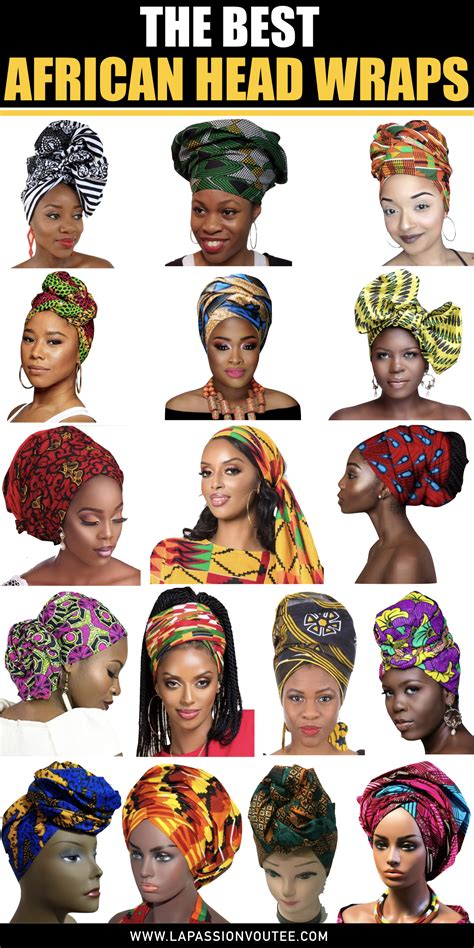Introduction

African head wraps have been an integral part of African culture for centuries, with roots in ancient Egypt and beyond. Worn by women and men alike, these versatile pieces of fabric represent cultural identity, spiritual beliefs, and personal style. In recent years, African head wraps have gained global popularity, embraced by fashion enthusiasts, celebrities, and everyday people alike. This article will delve into the rich history, diverse styles, and myriad benefits of African head wraps, celebrating their cultural significance and contemporary appeal.
Historical Roots and Cultural Significance
1. Ancient Origins: Tracing Head Wraps to Ancient Egypt
Archaeological evidence suggests that head wraps were worn in ancient Egypt as early as 3000 BCE. Depictions of pharaohs and queens adorned with elaborate head coverings have been found in hieroglyphs, sculptures, and paintings. These head wraps served both practical and ceremonial purposes, protecting the wearer from the sun and sand while also symbolizing status and authority.
2. Across the African Continent: Diverse Cultural Expressions
Head wraps have been adopted and adapted by numerous cultures across the African continent, each with its own unique style and significance. In West Africa, colorful head ties known as “gele” represent social status and festive occasions. In East Africa, elaborate head scarves called “leso” are worn for both formal and informal settings. In Southern Africa, women wear “doeks” as a symbol of resilience and cultural pride.
Styles and Techniques: A Kaleidoscope of Creativity
The styles of African head wraps are as diverse as the cultures they represent, offering endless possibilities for self-expression.
1. 50+ Stunning Styles: A Guide to African Head Wrap Designs
From the elegant “Gele” to the vibrant “Dashiki,” there is a head wrap style to suit every face shape, hair type, and personal preference. This guide presents over 50 different styles, complete with step-by-step instructions and inspiring images.
2. Scarves, Turbans, and More: Exploring Head Wrap Materials
African head wraps are made from a variety of materials, each with its own unique characteristics. From lightweight cotton scarves to shimmering silk turbans, the choice of fabric can alter the look, feel, and functionality of the head wrap.
3. Tying Techniques: A Masterclass in Head Wrap artistry
Mastering the art of tying an African head wrap requires patience and practice. This section provides a comprehensive guide to various tying techniques, including the “Crown Knot,” the “Pineapple Wrap,” and the “Turban Twist.”
Benefits of African Head Wraps: Beyond Style and Tradition
African head wraps offer not only aesthetic appeal but also a range of practical and health benefits.
1. 7 Health Benefits of Head Wraps: Unlocking Healing Properties
Head wraps have been shown to promote hair growth, reduce headaches, and protect the scalp from sun damage. They can also provide relief from stress, improve sleep quality, and boost confidence.
2. Versatility Unbound: Head Wraps for Fashion, Function, and Fun
African head wraps can be worn for a wide range of occasions, from formal weddings to casual beach days. They can be dressed up or down to complement any outfit, adding a touch of culture and style to any wardrobe.
Applications: From Headscarves to Innovative Solutions
The potential applications of African head wraps extend far beyond traditional head coverings.
1. Headscarves for Chemotherapy: A Comforting Embrace
Head wraps provide a comfortable and stylish solution for women undergoing chemotherapy, who often experience hair loss. They can help to reduce scalp irritation, boost confidence, and promote a sense of well-being.
2. Head Covers for Religious Observance: A Symbol of Faith
Head wraps are worn by women of various religions as a sign of modesty and devotion. From the “hijab” in Islam to the “tichel” in Judaism, these head coverings reflect cultural and spiritual beliefs.
3. Head Wraps as a Tool for Social Change: Empowering Communities
Head wraps have been used as a tool for social change, promoting awareness of cultural diversity, supporting local businesses, and empowering marginalized communities.
4. Headwear for Artists: A Canvas for Creative Expression
Head wraps have become a staple accessory for artists, musicians, and performers. They add a touch of flair to stage costumes, inspire creative ideas, and connect with cultural roots.
Tips and Tricks: Enhancing Your Head Wrap Experience
Mastering the art of wearing African head wraps requires a few simple tips and tricks.
1. 5 Tips for Choosing the Right Head Wrap: Style and Comfort
Consider your face shape, hair type, and desired style when selecting a head wrap. Experiment with different fabrics and colors to find the perfect match for your wardrobe and personality.
2. Tying Techniques for Beginners: A Step-by-Step Guide
This comprehensive guide provides step-by-step instructions for tying a variety of head wrap styles, from the basic “Wrap Around” to the intricate “Double Turban.”
3. Care and Maintenance: Preserving Your Head Wraps
Proper care and maintenance will ensure that your head wraps last for years to come. Learn how to wash, dry, and store your head wraps to keep them looking their best.
Conclusion
African head wraps are more than just pieces of fabric; they are cultural treasures that embody tradition, style, and empowerment. Their versatility, health benefits, and endless creative applications make them a valuable addition to any wardrobe. By embracing the rich history and diverse styles of African head wraps, we not only celebrate cultural diversity but also find practical solutions and inspiration for our everyday lives.
